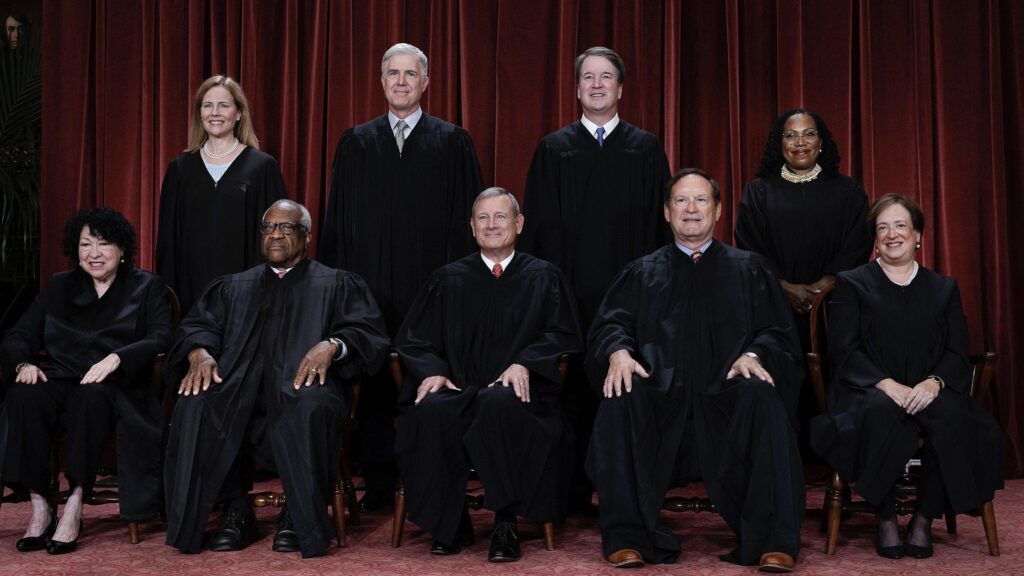In recent years, the integrity of women’s sports has come under intense scrutiny, raising complex questions about fairness, inclusion, and the future of athletic competition. As debates over transgender athlete participation continue to polarize communities and shape policy, the United States Supreme Court stands at a critical crossroads. With landmark cases on the horizon, the Court’s decisions could play a decisive role in defining the rules that govern women’s sports, balancing equality with competitive fairness. This article explores how the Supreme Court’s intervention may offer a vital solution to preserving the integrity of women’s athletics nationwide.
The Legal Challenges Facing Women’s Sports Today
Legal battles have increasingly dominated the conversation around fairness and inclusion in women’s sports, with courts often at the center of contentious debates. Challenges stem largely from policies regarding transgender athlete participation, which many argue compromise the integrity of female competitions. Despite Title IX’s clear intent to protect women’s opportunities in sports, blurred legal interpretations have opened the door to disputes that affect eligibility, safety, and scholarships. Advocates for female athletes stress the need for clear legal definitions, emphasizing that safeguarding fair competition is essential to the future of women’s sports.
Several states have enacted legislation to address these issues, but such efforts frequently face injunctions and counter-lawsuits, contributing to a patchwork of conflicting rulings. The Supreme Court’s potential involvement could unify these divided legal landscapes by setting nationwide precedents. Key points driving the debate include:
- Interpretation of Title IX protections concerning sex-based rights in school sports
- Balancing inclusion with competitive fairness and biological considerations
- Impacts on scholarships and college recruiting as eligibility rules evolve
| Legal Issue | Current Status | Potential Supreme Court Impact |
|---|---|---|
| Title IX Interpretation | Varied across circuits | Unified federal standard |
| Transgender Athlete Policies | Conflicting state laws | Clear nationwide guidelines |
| Scholarship Eligibility | Uncertain and contested | Protection of women’s athletic opportunities |
Protecting Fair Competition Through Clear Policy Enforcement
Ensuring a level playing field in women’s sports demands unwavering commitment to policies that clearly define eligibility criteria. Ambiguous regulations not only undermine the integrity of competition but also jeopardize the hard-earned achievements of female athletes. Consistent enforcement of these policies preserves both fairness and trust, reinforcing that participation is based on physiological distinctions that preserve competitive equity.
Key elements for effective policy enforcement include:
- Transparency: Clear guidelines accessible to athletes, coaches, and officials.
- Accountability: Robust mechanisms for monitoring compliance and resolving disputes.
- Scientific grounding: Policies informed by current research to protect fairness without discrimination.
- Adaptability: Ongoing review to align with evolving understanding and societal values.
| Policy Aspect | Impact on Competition |
|---|---|
| Eligibility Criteria | Defines who can compete in women’s sports |
| Testing Protocols | Ensures compliance with hormone levels |
| Dispute Resolution | Provides fair and timely outcomes |
| Education & Communication | Promotes understanding among stakeholders |
The Role of the Supreme Court in Establishing Precedent
The Supreme Court holds unparalleled authority in shaping the legal landscape through its power to set binding precedents. When it comes to contentious issues such as the participation of women in sports, the Court’s decisions become more than just legal rulings-they serve as foundational guidelines that lower courts across the nation must follow. This mechanism ensures consistency and clarity in the interpretation of complex issues like gender identity, competitive fairness, and civil rights within athletic contexts.
Key influences of Supreme Court precedent include:
- Establishing legal standards that protect or challenge existing policies on women’s sports eligibility.
- Guiding legislators in drafting laws that align with constitutional principles upheld by the Court.
- Providing a stable framework within which sports organizations can design fair competition rules.
- Shaping public discourse by affirming or reshaping societal norms legally recognized at the highest level.
| Year | Case | Impact |
|---|---|---|
| 1973 | Frontiero v. Richardson | Expanded gender discrimination protections |
| 2023 | Doe v. State Athletics Board | Addressed transgender athlete participation |
| Pending | Equality in Women’s Sports Coalition v. State | Expected to clarify competitive fairness standards |
Recommendations for Protecting Female Athletes’ Rights
To ensure fairness and preserve the integrity of women’s sports, policymakers must implement clear eligibility standards that respect biological differences. Sports organizations and governing bodies should collaborate to develop transparent guidelines that prioritize the rights of female athletes without discrimination. These measures should be coupled with educational initiatives aimed at coaches, officials, and the public to foster an environment of respect and understanding.
Additionally, instituting robust legal protections is critical. Legislative frameworks need to explicitly safeguard female athletes from policies that compromise competitive equity. Below is a comparison of key protective measures recommended for immediate adoption:
| Measure | Purpose | Impact |
|---|---|---|
| Eligibility Verification | Ensure competition based on biological criteria | Preserves fairness in female categories |
| Anti-Discrimination Laws | Protect athletes’ rights across all levels | Prevents policy overreach and bias |
| Educational Programs | Raise awareness on women’s sports issues | Fosters respectful, informed communities |
By adopting these strategies, the sports community can strike a balance between inclusivity and integrity, ensuring that female athletes continue to have equitable opportunities to compete, excel, and be celebrated for their achievements.
Insights and Conclusions
As debates over the integrity and future of women’s sports continue to unfold nationwide, the Supreme Court’s forthcoming decisions could prove pivotal. With the power to uphold fair competition and protect athletic opportunities for female athletes, the Court stands at a critical crossroads. How it chooses to address these issues will not only shape the landscape of women’s sports but also signal the broader societal values that guide gender equity in America’s athletic arenas.





